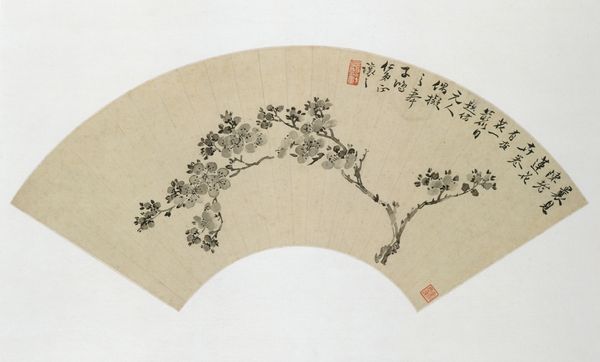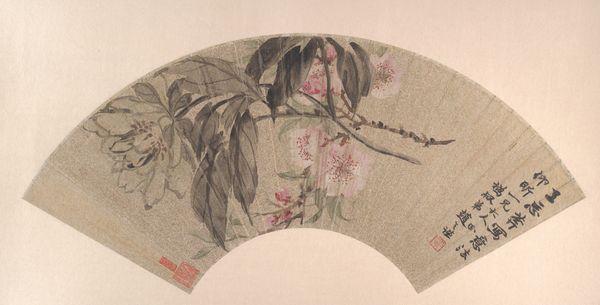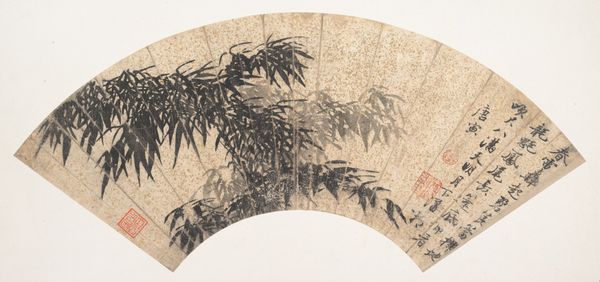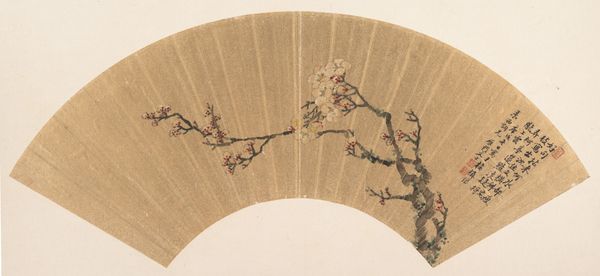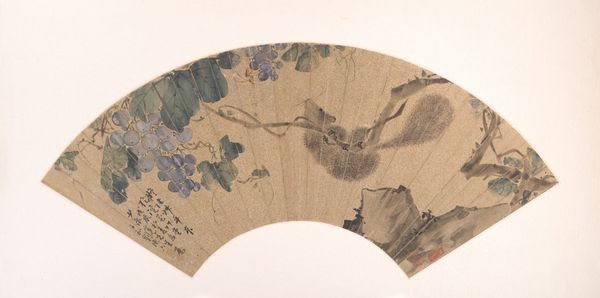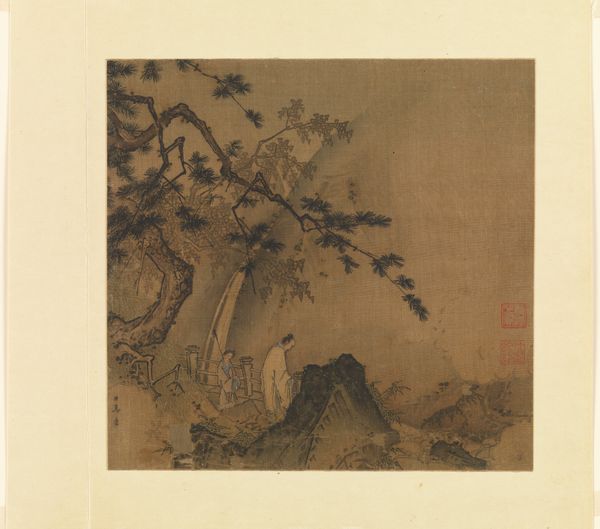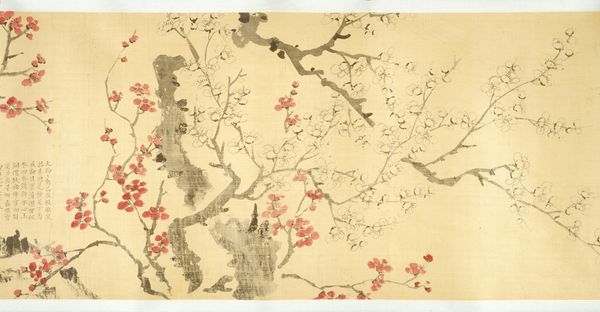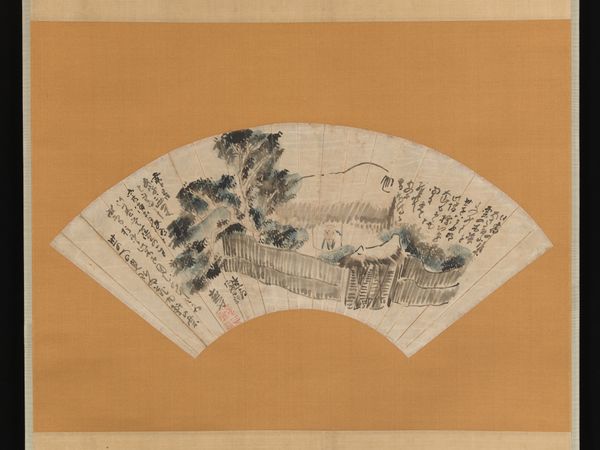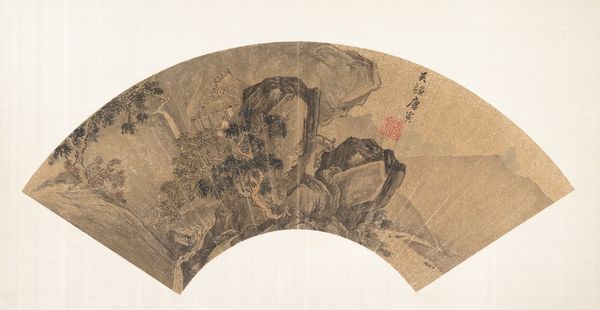
painting, paper, watercolor, ink
#
painting
#
asian-art
#
landscape
#
japan
#
paper
#
watercolor
#
ink
#
watercolour illustration
#
watercolor
#
realism
Dimensions: 7 15/16 × 18 in. (20.16 × 45.72 cm) (image)44 1/8 × 26 9/16 in. (112.08 × 67.47 cm) (mount, without roller)
Copyright: Public Domain
Curator: Ah, another work that quietly draws you in. The artist here is Yamamoto Baiitsu, and what we’re looking at is titled "Pines." It's estimated to have been created sometime in the 19th century. Baiitsu rendered this scene using ink and watercolor on paper. Editor: There's something beautifully sparse about it. It feels almost like a whisper of a landscape. I imagine myself there, enveloped in stillness. It's so delicate...I find that so compelling, personally. It almost dissolves into the light. Curator: The minimalism absolutely amplifies its symbolic weight, particularly within the context of Japanese art. The pine, in particular, is a crucial figure. Across East Asia, it represents longevity, steadfastness, and even moral virtue—particularly prized attributes in Confucianism. It invites contemplation on mortality, and our own capacity to weather storms, both literally and metaphorically. Editor: Right, there's something enduring about these pines. You just *know* they've seen things. It really gets you pondering our relationship to the land, our place in the unfolding of time... It also just really appeals to my senses – that texture of the bark, those gentle tones. How Baiitsu rendered the form is, I find, a testament to careful observation and translation. Curator: Absolutely. What might also deepen our understanding is an examination of Baiitsu himself. He belonged to a lineage of painters deeply involved in *bunjinga*, or literati painting. It emphasized personal expression, intellectual cultivation, and often drew inspiration from Chinese aesthetics. It almost operated as a counterpoint to more formalized, academic painting styles. Baiitsu's work, and that of his artistic peers, functioned, on one level, as social commentary. It emphasized the artist as a thoughtful scholar in tune with social and natural justice, whose moral grounding can in turn function as an unspoken guide for society. Editor: Social commentary wrapped in watercolor! That’s not a protest sign as much as an open-ended poetic gesture toward... a different way of seeing. It’s brilliant, really. Makes you rethink what resistance, in its quietest form, might actually look like. Curator: Exactly. And to think, all that layered meaning embedded in a seemingly simple image of windswept pines! Editor: Makes you wanna go hug a tree, doesn't it? Okay, * contemplate our connection to the universe in a tranquil setting... * something like that. What a remarkable piece.
Comments
No comments
Be the first to comment and join the conversation on the ultimate creative platform.
